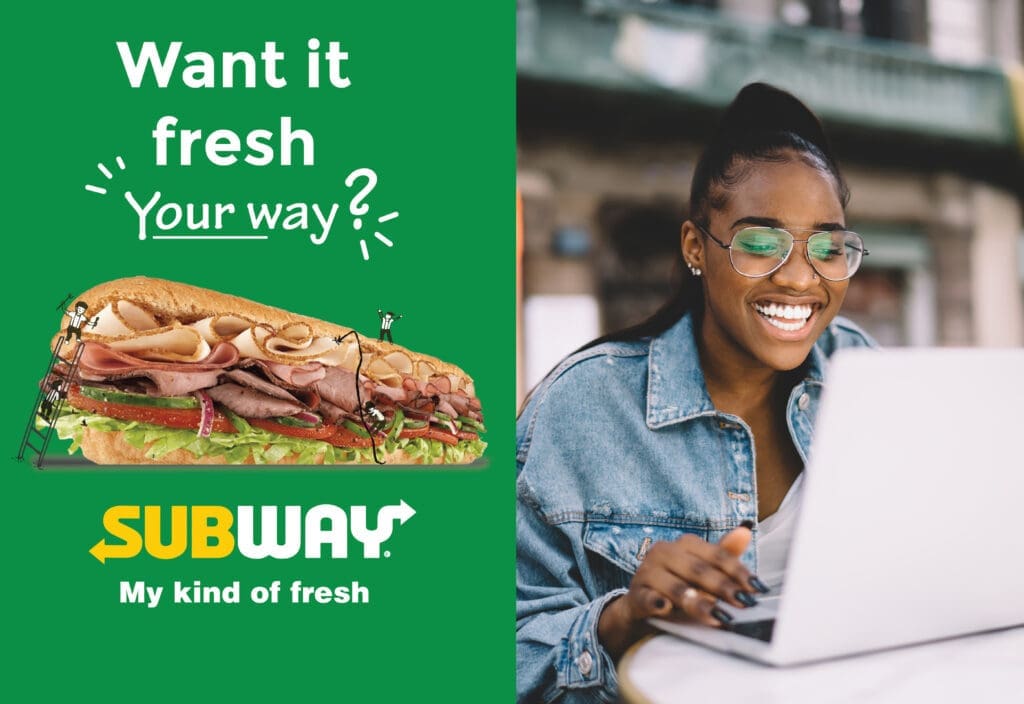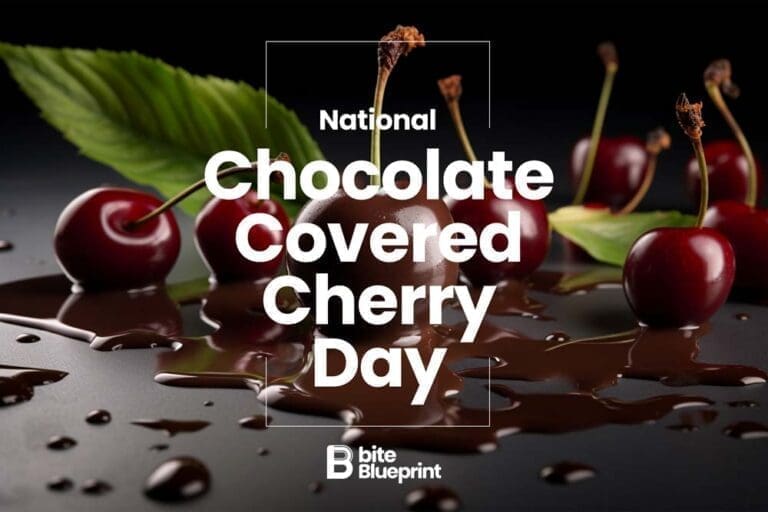A successful email marketing strategy is key to fostering customer loyalty and retention. Discover how Subway leverages personalized emails to build lasting connections and grow business. Explore the power of targeted campaigns, loyalty rewards, and engaging content to boost customer engagement and develop a Good customer relationship.
For insights on maximizing your food business through digital strategies, read our article. Check out Digitizing the Customer Experience: A Starbucks Case Study.
This strategy is not just about sending promotions. It’s about building relationships, fostering engagement, rewarding loyalty programs, and forming a strong customer loyalty strategy.
Subway’s approach is an expert lesson in email marketing. It combines personalization, relevance, and timely communication.
In this article, we’ll examine Subway’s email strategy. We’ll explore how it uses email to enhance customer loyalty and drive business success.
You’ll find valuable insights here whether you’re a marketing professional or a business owner. Learn from Subway’s success and enhance your email marketing efforts.
Understanding the Power of Email Marketing in Customer Loyalty
Email marketing is more than just a promotional tool. It’s a platform for building relationships and fostering customer loyalty.

In the digital age, customers want personalized experiences. They want to experience a sense of value and understanding; email marketing can deliver this.
- It allows for targeted communication.
- It enables businesses to offer customized promotions.
- It fosters a sense of connection between the brand and the customer.
Check out Salesforce’s resources on email marketing personalization for more on personalizing your email marketing efforts.
The Role of Email Marketing in Today’s Business Landscape
In today’s business landscape, email marketing holds a key role. It’s a cost-effective way to reach customers directly.
Besides, it’s measurable. Businesses can track open rates, click-through rates, and conversions. This data can inform strategy and drive improvements.
Why Customer Loyalty Matters
Customer loyalty is crucial for business success. Loyal customers are more likely to make repeat purchases. They’re also more likely to recommend the brand to others.
Retaining existing customers is often more cost-effective than acquiring new ones. Hence, fostering customer loyalty should be a key business objective.
Subway’s Email Marketing Strategy Unveiled
Subway, the multinational fast-food franchise, has mastered the art of email marketing. Their strategy is a testament to the power of personalized, relevant communication.

Subway’s emails are not generic. They tailor them to the individual customer, and this customization is a key factor in their success.
The brand also effectively leverages customer data. It uses it to segment its audience and deliver targeted messages, ensuring its emails are always relevant and engaging.
Finally, Subway’s email content reflects the brand’s values. It connects with their audience and fosters a sense of connection.
Customization at the Core
Customization is at the heart of Subway’s email marketing strategy. They understand that each customer has unique preferences and behaviors.
Subway uses this understanding to tailor its email content. It offers customized promotions and rewards based on the customer’s purchase history and preferences.
This personalization makes customers feel valued. It increases the likelihood of engagement and fosters brand loyalty.
Segmentation: Targeting the Right Audience
Segmentation is another key aspect of Subway’s strategy. They use customer data to segment their audience into different groups.
These groups may rely on purchase history, dietary preferences, or location. Subway then tailors their email messages to each group.
This targeted approach ensures that customers receive relevant, engaging content, increasing the effectiveness of Subway’s email campaigns.
Engaging Content that Resonates
Subway designs its email content to connect with its audience and reflect the brand’s values and voice.
The content is often educational, providing tips and information about their products. It also includes storytelling elements to connect with customers on a deeper level.
Besides, Subway’s emails are visually appealing and mobile-friendly. This enhances the user experience and encourages engagement.
Leveraging Email Campaigns for Enhanced Customer Engagement
Subway designs its email campaigns to enhance customer engagement. They target, personalize, and remain relevant.

The brand uses email marketing to encourage customers to interact with them. This could be online, such as visiting their website, or offline, like visiting a store.
Subway’s email campaigns include:
- Customized promotions
- Loyalty rewards
- Information about new products
- Invitations to events
- Surveys for customer feedback
These campaigns provide value to the customer and foster brand loyalty, a critical component of Best customer loyalty programs.
Crafting Compelling Email Promotions
Subway crafts its email promotions to urge action. They are personalized, relevant, and time-sensitive.
The brand uses customer data to offer customized promotions. These could be based on the customer’s purchase history, dietary preferences, or location.
Subway’s promotions are also time-sensitive. This creates a sense of need and encourages customers to act quickly.
Finally, the brand’s email promotions are clear and compelling. They have a clear call to action that guides the customer to what to do next.
The Impact of Loyalty Rewards on Email Marketing
Loyalty rewards are crucial in Subway’s email marketing and loyalty programs. They motivate repeat purchases and strengthen brand liking.
Subway often includes loyalty rewards in their emails. They could be discounts, free items, or exclusive access to new products.
These rewards make customers feel valued. They encourage repeat purchases and foster a sense of loyalty towards the brand.
Besides, Subway personalizes its loyalty rewards. They use the customer’s purchase history and preferences to ensure the rewards stay relevant and appealing.
Measuring Success: Analytics and Adjustments
Subway’s email marketing strategy is not static. It’s dynamic and constantly evolving based on performance metrics and customer feedback.
The brand uses email marketing analytics to measure the success of their campaigns. These analytics provide insights into customer preferences and behaviors.
Key metrics Subway tracks include:
- Open rates
- Click-through rates
- Conversion rates
- Bounce rates
- Unsubscribe rates
These metrics help Subway understand what’s working and what’s not. They use this information to refine their email strategy and improve future campaigns.
Key Performance Indicators for Email Marketing
Key Performance Indicators (KPIs) are crucial in email marketing. They help measure the success of a campaign and guide future strategies.
For Subway, KPIs like open rates and click-through rates are important. They show how many people are engaging with their emails.
Conversion rates are another crucial KPI. They show how many people took the desired action after opening the email. This could include actions like purchasing or signing up for an event.
A/B Testing: Refining the Email Strategy
Subway uses A/B testing to refine its email strategy. This involves testing two versions of an email to see which performs better.
The brand might test different subject lines, email designs, or call-to-actions. It then sends these different versions to a small group of subscribers.
Based on the results, Subway can identify which version resonated more with its audience. It then uses this information to improve its overall email strategy.
Best Practices for Email Marketing Inspired by Subway
Subway’s email marketing strategy offers valuable insights for businesses. It highlights the importance of personalization, segmentation, and engaging content.
Here are some best practices inspired by Subway’s approach:
- Customize emails based on customer data
- Segment your audience for targeted campaigns
- Create engaging content that reflects your brand
- Use email campaigns to enhance customer engagement
- Measure success and refine your strategy based on analytics
Integrating Email Marketing with Other Digital Channels
Subway’s email marketing doesn’t exist in a vacuum. It integrates with other digital channels for a unified customer experience.
For instance, Subway’s emails often include links to their social media profiles. This encourages customers to engage with the brand on multiple platforms.
Similarly, email campaigns can drive traffic to Subway’s website or app. This multi-channel approach helps Subway maintain a consistent brand presence across all customer touchpoints.
Maintaining Compliance and Respecting Customer Preferences
Subway’s email marketing strategy respects customer preferences and complies with privacy regulations. This is crucial for building trust and maintaining a positive brand image.
For example, Subway’s emails always include a clear and easy opt-out process. This respects the customer’s right to control what communications they receive.
Also, Subway ensures its email marketing practices comply with regulations like the GDPR. This includes obtaining explicit consent before sending marketing emails and protecting customer data.
Conclusion:
Subway’s email marketing strategy demonstrates the power of this channel in fostering customer loyalty. As consumer preferences evolve, businesses must adapt their strategies to stay relevant and effective.
We expect to see even more customization, automation, and integration in email marketing. Businesses that leverage these trends will boost customer loyalty. Companies like Subway can drive long-term success by doing so. The key is always providing value to the customer beyond just selling products. After all, customer loyalty is not just about repeat purchases but about building meaningful relationships.



